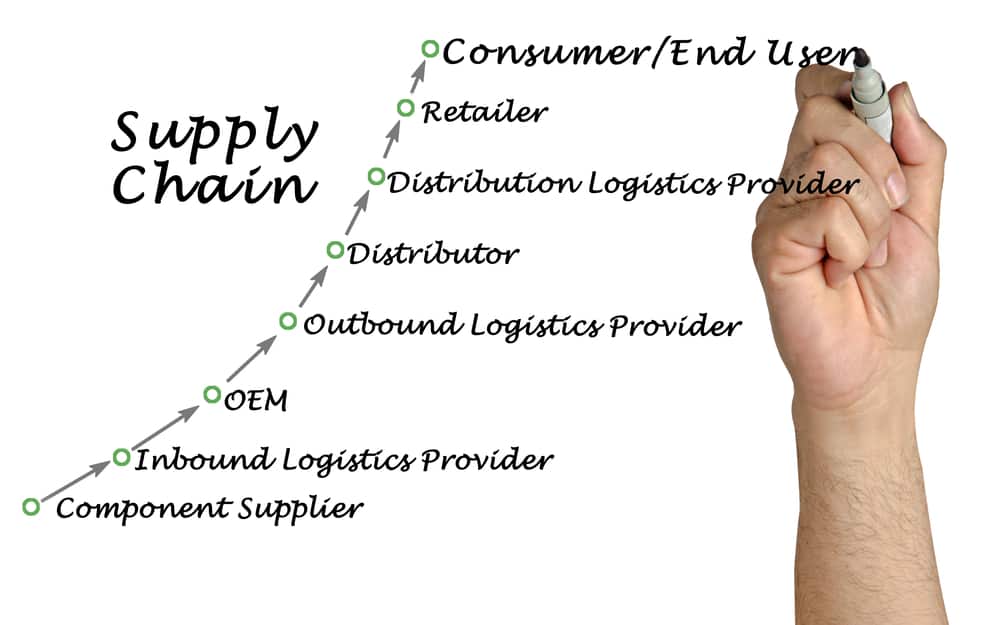
Not only do circuit boards and electronics have to work properly, but they also have to be delivered in a timely manner. Unfortunately, a lack of availability in your supply chain can set your development back and threaten your ability to deliver on schedule to your customers. Thus, the importance of an effective PCB component sourcing strategy can not be overstated. Consequently, it is critical to understand the causes of supply chain disruptions, important future trends, and solutions, like virtual library services, that will drive efficient electronic components supply chain resilient PCB design, manufacturing, and product delivery in the future.
Understanding the Electronic Components Supply Chain
Understanding the electronic components supply chain begins by recognizing its complexity and the stakeholders involved.

Steps of an electronic components supply chain
As shown above, your supply chain consists of multiple entities. To maximize efficiency, this interdependent group must not only execute their role but do so cohesively with their counterparts. How well this complex process functions has significant implications for your design and development process. Any failure can result in redesign, remanufacture, and/or development or production delay. Consequently, engineers and PCB designers must be aware of threats to the supply chain.
Reassessing Your Components Supply Chain
Dealing with manufacturer shortfalls is a long-standing supply chain challenge for PCB designers, manufacturers, and developers. Similarly, the possibility of inadvertently procuring low-quality or counterfeit parts is an unfortunate, but lingering reality when sourcing electronic components, especially commonly used active devices and passives. Recent challenges have exposed the vulnerability of the electronic components supply chain to extensive shortages, government actions like shutdowns and trading restrictions, and other unforeseen developments.
These events have necessitated a sober reassessment of the degree to which designers and developers control their PCB development process. This industry-wide exercise has been challenging but produced some promising results. Most importantly, it highlighted the need to look over the horizon at what will impact the electronics components supply chain going forward.
Ensuring Future Supply Chain Resilience
To compete now and in the future, it is critical that the management of your electronic component supply chain be a prominent consideration for designs. Adopting this perspective requires being aware of changes and innovations in component manufacturing and distribution that will dictate component availability in the future.
|
Important Trends in IC Manufacturing
|
For more information on important future electronic component trends that will impact PCB design and development, see this eBook on Electronic Component Industry Trends.
To take advantage of future trends to help secure your supply chain, you must have and implement a strategy, including the essentials listed below.
Essentials for a Secure Electronic Components Supply Chain
✅ Base selection decisions on real-time availability data
✅ Weigh the risks of using obsolete components
✅ Leverage the power of a custom component library to ensure accurate CAD models
✅ Select components from a trusted source
✅ Order from reliable suppliers
✅ Verify component authenticity
✅ Buy in bulk when possible
It is not possible to eliminate all risks from your electronic components supply chain, however, by understanding where the industry is going and incorporating the essentials above, the probability that you will fall victim to a supply chain contingency is minimized.
Building and maintaining an effective component library that is supply chain resilient requires expertise and substantial time commitment. Working with Ultra Librarian is the most efficient solution. We can build you a customized Virtual Librarian Service that will streamline component selection, ensure parts meet your standards, expedite procurement, and optimize your PCBA development process for innovation. To learn more, schedule a meeting.








